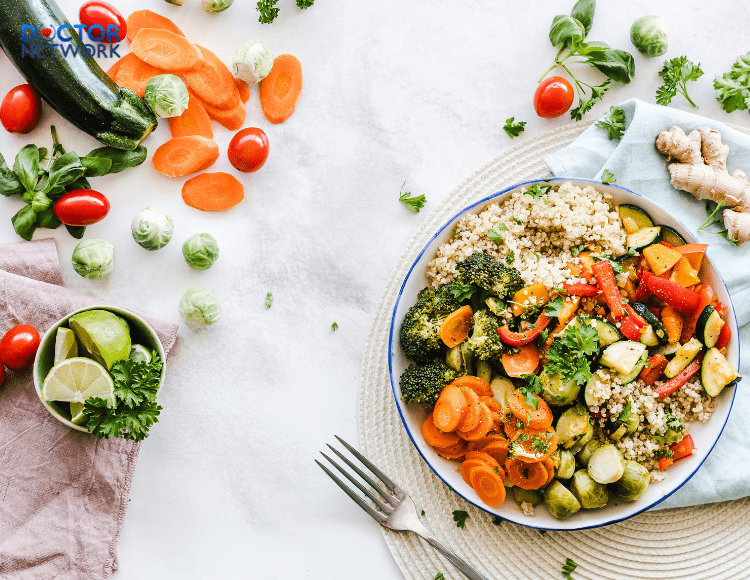Food cravings, also known as food carving, refer to the continuous desire for a specific or multiple types of food. This phenomenon is prevalent among individuals with excess weight, serving as a fundamental cause of overeating and a significant obstacle in weight loss efforts. Let’s delve into the origins of food cravings, when they typically occur, and how to address them, with insights from Assoc. Prof. Nguyen Anh Tuan, MD, PhD.
1. Commonality of Food Cravings:
Food cravings are a common sensation, affecting people across different age groups and genders. Surveys estimate that nearly 100% of young women and around 70% of young men have experienced food cravings for specific items within the past year. Is this phenomenon considered normal for most individuals?

Food cravings are a common sensation, occurring across various age groups and genders
2. Persistent Nature of Food Cravings:
Individuals often express that food cravings seem to be ever-present in their minds, persisting even when they try to avoid thinking about them. Research indicates that specific areas of the brain responsible for memory and pleasure play a crucial role in sustaining food cravings.
3. Stress and Emotional Eating:
Many people report an increased desire for food when experiencing stress, leading to weight gain. Carbohydrates, in particular, can elevate serotonin levels, providing a soothing effect. Understanding the link between stress and food cravings can contribute to managing emotional eating habits.
4. Genetic Influence on Cravings:
Evolutionary aspects in our genes may contribute to the tendency to crave calorie-dense foods, aiding in survival during periods of scarcity. Additionally, studies suggest that a lack of dietary diversity might intensify cravings, emphasizing the need for a balanced diet.
5. Types of Craved Foods:
Food cravings often involve items rich in fat, sugar, or both. Understanding the specific foods individuals crave can shed light on their nutritional needs and emotional connections to these foods.

Cravings are directed towards foods containing fat, sugar, or both
6. Strategies to Reduce Food Cravings:
a. Choose Healthier Carbs
Opt for “smart carbs,” such as whole grains, legumes, fruits, and vegetables, to satisfy cravings with nutritious options.
b. Maintain Control – Strategies to reduce food cravings
Limiting your diet excessively can exacerbate cravings, so practicing moderation and control is crucial.
c. Opt for Lower-Calorie Alternatives
Creating low-calorie versions of favorite foods can help satisfy cravings without compromising health goals.
d. Avoid Extreme Hunger
Skipping meals can lead to excessive hunger, prompting overeating. Consistent, balanced meals can help control cravings.
e. Keep a Craving Journal
Recording instances of food cravings, including emotions and circumstances, can provide insights into patterns and triggers.

Fiber-rich vegetables are beneficial for the health of individuals with overweight or obesity
f. Prioritize Self-Care
Engaging in stress-reducing activities, regular exercise, and overall self-care can contribute to fewer instances of food cravings.
Addressing food cravings involves a holistic approach, encompassing dietary choices, lifestyle adjustments, and emotional well-being. Implementing small changes gradually and staying committed to healthier habits can contribute to achieving weight management goals. This article aims to provide valuable information on food cravings and overweight or obesity, offering guidance for individuals seeking a balanced and sustainable lifestyle.
Kiểm Duyệt Nội Dung
More than 10 years of marketing communications experience in the medical and health field.
Successfully deployed marketing communication activities, content development and social networking channels for hospital partners, clinics, doctors and medical professionals across the country.
More than 6 years of experience in organizing and producing leading prestigious medical programs in Vietnam, in collaboration with Ho Chi Minh City Television (HTV). Typical programs include Nhật Ký Blouse Trắng, Bác Sĩ Nói Gì, Alo Bác Sĩ Nghe, Nhật Ký Hạnh Phúc, Vui Khỏe Cùng Con, Bác Sỹ Mẹ, v.v.
Comprehensive cooperation with hundreds of hospitals and clinics, thousands of doctors and medical experts to join hands in building a medical content and service platform on the Doctor Network application.



























